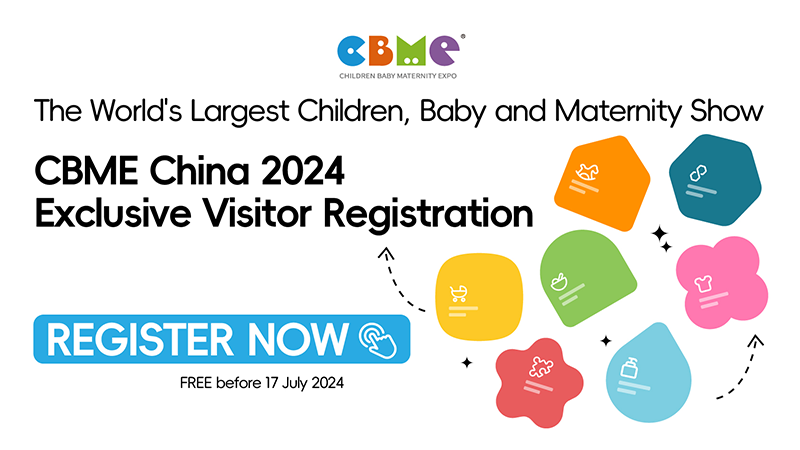Amidst the challenges of declining fertility rates and changing family dynamics, China’s mother and baby industry has found new opportunities for growth by adapting to evolving demographics, expanding into new territories, and introducing innovative products. Despite reduced birth rates, strategic government policies and the rapid development of mobile internet have fostered steady growth, particularly in the online market. The key to success lies in leveraging these emerging trends, as highlighted in the recently released “Nurturing by Heart, Seeing Growth: 2024 Mother and Baby Industry White Paper,” which focuses on new demographics, territories, and products as the main pillars of future growth.

Evolving Consumer Dynamics in the Mother and Baby Market
China’s mother and baby consumer market continues to grow despite economic transformation pressures and a declining birth rate. The total fertility rate dropped from 1.5–1.6 in 2010 to 1.3 in 2020, yet the market remains resilient due to pro-natalist policies and financial subsidies that support families. As consumer spending stabilizes, online purchasing habits dominate, particularly in mother and baby categories. Modern parents, primarily from the post-90s and post-95s generations, are shaping the market with updated child-rearing concepts, placing higher demands on product quality and services.
Newly formed families, especially those in lower-tier cities, have multiple children and diverse needs. Families in higher-tier cities, however, tend to concentrate resources on their only child, making their spending more focused and specific. Mothers remain the primary caregivers, but fathers are playing a growing role in child-rearing, underscoring the importance of collaborative parenting.

Capitalizing on “Three New Values” in the Mother and Baby Market
The white paper by Kantar and Massive Engine identifies three key areas of opportunity in the mother and baby sector: new demographics, new territories, and new products. Each of these dimensions offers businesses a roadmap to understand evolving consumer needs and develop strategies to meet them.
1. New Demographics: Understanding Diverse Parenting Profiles
One of the most significant shifts in the mother and baby industry is the emergence of diverse parenting profiles. Douyin’s platform has segmented this demographic into seven distinct types, each with unique needs and behaviors. These include:
- Pregnant Dreamers in High-tier Cities: These are young, first-time mothers with high expectations for their parenting journey, who rely on family support and seek a nurturing, free-spirited upbringing for their children.
- Quality-Seeking Moms of Only Children: These mothers focus on creating a premium environment for their only child, emphasizing well-rounded development in physical, emotional, and social areas.
- Countryside Multiple-child Moms: Often from third- or fourth-tier cities, these mothers juggle raising several children and prioritize cost-effective solutions for their family’s growth.
- Academic Moms with Two Children: These moms adopt a scientific approach to parenting, continuously seeking knowledge from various sources and encouraging their children’s free exploration and interest development.
- Ultraman Moms of School-aged Children: These mothers actively engage their children in extracurricular activities, aiming for holistic development, while maintaining a positive and enthusiastic outlook on education.
- Enthusiastic Cheongsam Moms with High-School Age Children: Focused on academic performance, these mothers invest heavily in tutoring and educational resources for their high-school-aged children, creating an optimal learning environment.
- Elite Dads of Young Kids: A growing number of fathers are taking on a more active role in parenting, using positive reinforcement techniques to nurture a harmonious and well-rounded upbringing for their young children.
2. New Territories: Geographic Expansion and Targeting Lower-tier Cities
The mother and baby market has seen rapid growth in lower-tier cities, where families tend to have multiple children. As birth rates in high-tier cities remain low, companies can capitalize on the growing demand in smaller urban areas. These families prioritize affordability and practicality, driving demand for budget-friendly products that do not compromise on quality. Expanding operations to these regions will allow businesses to capture a larger share of this growing market segment.
In contrast, high-tier cities present opportunities for premium products and services, with families investing in higher-quality items for their only child. Offering customized and specialized products, such as those that promote emotional and social development, will resonate with these consumers.
3. New Products: Innovation in the Mother and Baby Industry
New products, particularly those that align with the changing priorities of modern parents, are key to growth in the mother and baby market. Younger generations of parents are increasingly health-conscious, seeking products that promote not only physical well-being but also emotional and social health for their children. The rise of smart parenting products, such as connected toys and educational tools, reflects this shift in demand.
Additionally, the growing awareness of sustainable and eco-friendly products has influenced purchasing decisions, with parents opting for items that minimize environmental impact. Companies that innovate in these areas, offering products that combine functionality with sustainability, will have a competitive edge.
Strategic Recommendations for Seizing Opportunities
To seize the opportunities presented by new demographics, new territories, and new products, businesses in the mother and baby industry should:
- Tailor Marketing and Products to Different Parenting Profiles: Understanding the diverse needs of various parent groups will allow businesses to create targeted campaigns and product offerings that resonate with each demographic.
- Expand into Lower-tier Cities: By developing affordable, practical solutions for families in these regions, companies can tap into a rapidly growing market segment.
- Innovate with Health and Sustainability in Mind: Younger parents are increasingly drawn to products that support their children’s mental, emotional, and social health, as well as those that are environmentally friendly. Offering innovative, eco-conscious products will help businesses capture this demand.
Conclusion
As China’s mother and baby industry continues to evolve, companies that embrace these new trends will be well-positioned for future growth. By focusing on new demographics, expanding into new territories, and developing innovative products, businesses can not only overcome the challenges posed by declining birth rates but also capitalize on the emerging opportunities that come with changing consumer needs.
Keywords:
- CBME 2024 visitor tickets and passes
- CBME 2024 hotel and accommodation near venue
- CBME 2024 baby care essentials expo
- Mother Baby Industry Opportunities 2024






